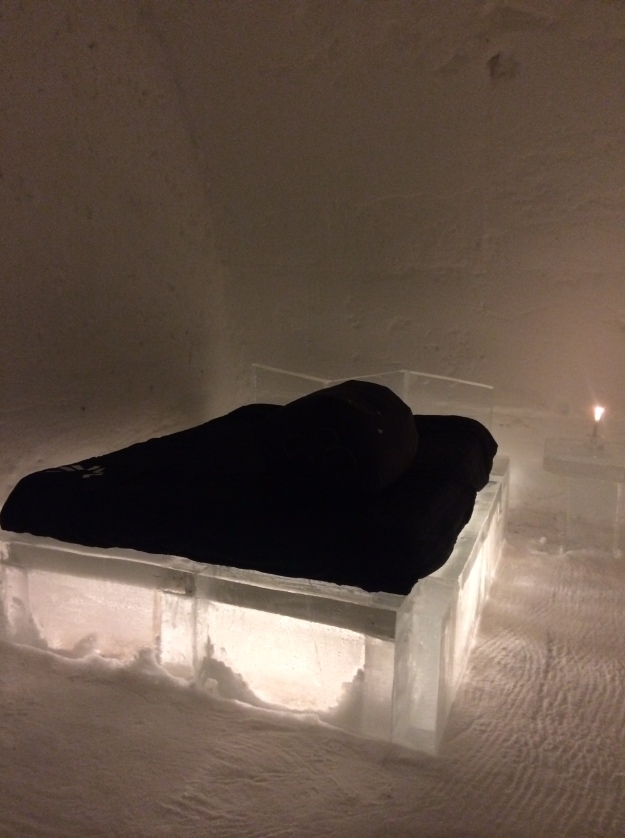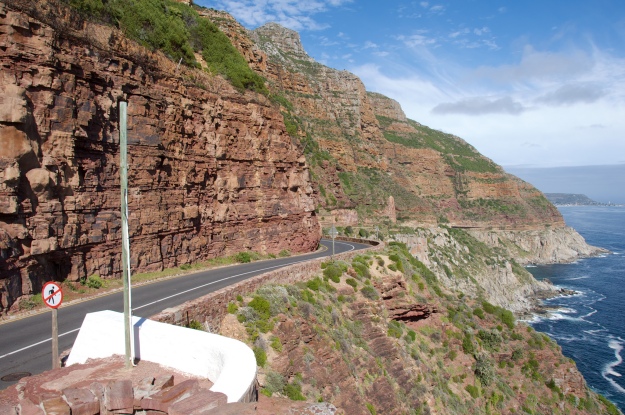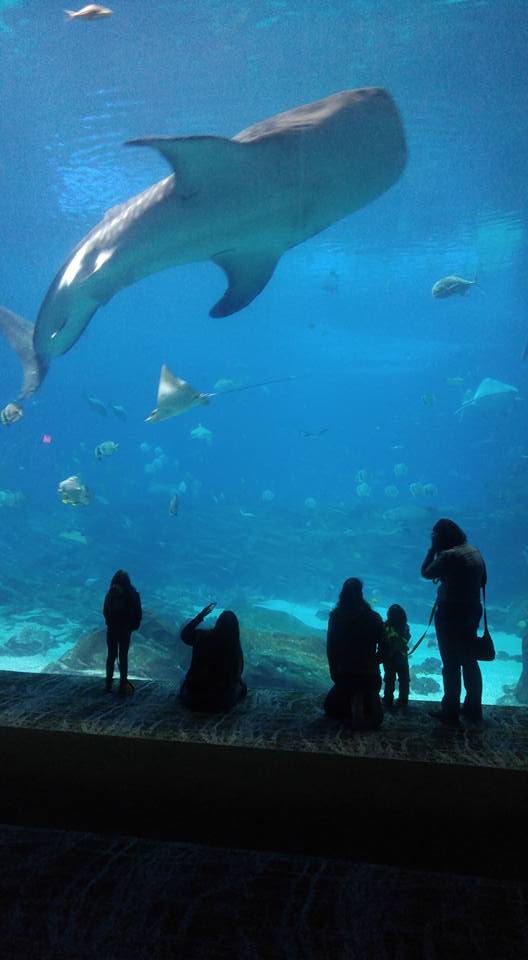
My winter hotel for one night
As I wiggled myself into my thermal sleeping bag, I hunkered down for the challenge of sleeping the entire night in a pretty cool accommodation – an ice hotel.
Located in Canada’s province of Quebec, Hôtel de Glace is what its name implies. During a recent work trip to Quebec City, part of my itinerary included a booked stay at this unique accommodation and tourist attraction.
Built anew every December, this winter lodging is primarily made from snow – 30,000 tons worth – that is continuously churned by snow blowers to harden and build the hotel’s foundation. Ice is also involved in the building process. Blocks are partly used in the construction, but also get turned into furniture and become stands for the hotel’s bar area.

The hotel is usually open from January through March.
Hôtel de Glace opens for business after the New Year in January and stays in operation until March (in 2017, it is scheduled to shut down on March 26). While it debuted in 2001, Hôtel de Glace has been on the grounds of Village Vacances Valcartier, a resort/spa about 20 minutes from Quebec City, since 2016.
My reservation for Hôtel de Glace included the booking of a same night hotel room at Village Vacances Valcartier, where guests can keep their luggage and retreat to before and after their stay.

Trek up and go down this icy slide.
Taking a Tour
Visitors who might shiver over the thought of sleeping in an ice hotel can opt to take a scheduled tour of the property instead. Tours offer peeks into different types of rooms and suites. They include a stop at the hotel’s lounge/bar area, with the opportunity to order a specialty cocktail served in a glass made from ice. The grounds also include the chapel, with furry seat coverings on benches and where weddings take place, and a side building displaying various ice sculptures.

2017’s version of this ice hotel carries a Nordic theme.
With the 2017 version of Hôtel de Glace, the main building holds 44 various rooms and suites, bar/lounge, and a play area with a slide. Each sleeping accommodation is graced with wall carvings depicting various winter themes or creatures. Furnishings are mostly a bed with a mattress with an icebox base and a nightstand. Plus, the bedframe has a light switch, where can be turned on and off when needed.

My sleeping sack
A Sleeping Lesson
Overnight guests of the Hôtel de Glace attend a mandatory sleep session, in which a hotel employee advises you on how to prepare for bedtime. For PJs, you’re told not to wear any cotton-based clothing (as it soaks up moisture) but put light ones made by synthetic materials. You don’t want to be over-layered either, as you will break into a night sweat; we’re told that we’ll be your own body heater. If you’re getting hot inside your sack, take off what’s excess. (Our guide suggested that you could sleep naked, as this helps body heat circulate more, but I decided not to go that far). And, yes, she reassured us that our sleeping bags are washed daily.
As for what else you’ll be sleeping in, your main gear will be a cocoon-like sleeping sack with a hoodie that you worm your way into and close up with a side zipper and strap. We’re also given a visual demo on getting into it, which seemed to prove that some wiggling would be involved.
We were also given a number of do’s and don’ts. Don’t: putting objects like jewelry (as I asked) or eyeglasses on your ice-made nightstand. You’ll find them frozen to the stand in the morning. Another don’t: taking our sleeping sack out of its waterproof holding bag before settling down for the night. If so, it will get crispy and cold.

These drinks are served in ice glasses. I had the first one on the left.
Of course, another important issue was addressed: what we needed to do if we had to use the bathroom. Basically, you have to get out of our sack, quickly put on your boots and any needed outdoor gear to leave your room, and head to an outdoor area with heated and lighted porta potties (so go easy on drinking beforehand.) You keep your sack zipped up, too, to retain its heat. Your room door consists of a curtain and your morning wake-up call involves staffers giving you a shout (your last one comes at 8:30 a.m., so be out at least before 9 a.m. or you might wake up to find a tour group staring at you.)
Our stay also included access to an outdoor hot tub and sauna area, where guests can properly warm up and dry off before going to bed. But then I envisioned a mad dash in my provided robe to escape the reminding cold air and decided to pass on it.

My sleeping quarters
Going to Bed
Overnight guests at Hôtel de Glace are let into their rooms at 9 p.m. My game plan for the night was to first go for a cocktail at one of the three bar sections and then run back to my room at Village Vacances Valcartier to get dressed and use the toilet one last time. I also wanted to secure my white-colored room key inside my pocket.
Apparently, there is no curfew inside Hotel de Glace, so if need to, guests can opt to go back inside the Village Vacances Valcartier’s hotel area. Particularly if they decide that they want to sleep back there instead. I wasn’t sure if I think I would stay the entire night in my iced room, but I figured I’d see how I felt – and how cold I would feel.

The door to my room
Room 41 was mine. It was cozy in size, reminding me of a studio apartment. I found my bed to be reasonably firm and the light switch readily accessible. I pulled out my sleep sack and put my boots inside its holding bag to keep them from freezing. While trying to fully remember my given instructions, I wormed my way into the sack.
I tugged up the zipper and crunched myself down inside, while wearing my probably well-approved long johns and knit socks, along with gloves, snow pants, hat, and ski jacket (I tend to err on the side of caution). For peace of mind, I kept one hand warmer inside one glove and another in a lined pocket. I pulled over my sleep sack hoodie and after a bit of maneuvering to get comfortable and removing a slightly sweaty hat, I slept. I woke up a bit during the night but rolled back into a steady slumber.
Startled awake by my wakeup call, I unzipped myself out, got dressed, left my sack on the bed, and headed out. Going back to my hotel room at Village Vacances Valcartier, I rewarded myself with a warm shower, put on a change of clothes, and headed down for breakfast inside the restaurant area. I don’t know if I would do a return stay, but it’s interesting to check off a stay at a place like Hôtel de Glace off my bucket list.













